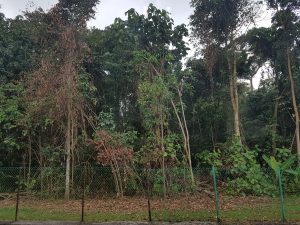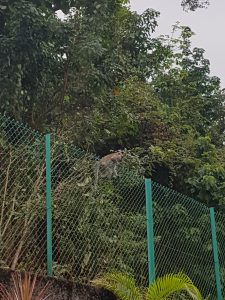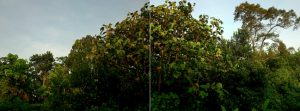Singapore, the Garden City of Asia, boasts its lush greenery and abundant biodiversity. But all is not always as such. The recent toppling of a tembusu tree at the Singapore Botanic Gardens sparked major concern in Singapore when it killed a person and injured four others. This is not the first incident of tree fall that has cost a life or property damage. In fact, these incidents began as early as 2013.
Four years ago, a forest tree fell right into my house. That’s right, urban ecology in my backyard. I remember walking into the kitchen to get my fix of caffeine when a slow, loud and unusual creaking sound resonated from the backyard. I headed out to investigate. A huge tree and its massive foliage came tumbling down with a loud whoosh. Roofs were broken, fences were bent and branches were everywhere. Fortunately, no one was injured. (Personally, it was an amazing experience to see a tree fall (without getting injured), but it was a nightmare for my parents.)
This year, the trees came back and vegetation crept closer to my house. The fall of the tembusu sent my neighbourhood into another email frenzy with the National Parks Board (NParks). They wanted their backyards to be safe spaces. This meant the trimming of trees and the removal of vegetation from the forest. Their unhappiness and persistence of the matter left me in a dilemma between the interest of my neighbourhood and that of the biota in our backyards. My silent dilemma came to an end when a decision was made. Just last week, workers came with their equipment and started sawing down trees in the forest which were within 5 metres of the neighbourhood. The result? A barren forest edge, the loss of heritage trees, a noticeable decrease in bird calls, macaques walking along the fence, and what the neighbourhood wanted: safer backyards. It is interesting to note that macaques have never been seen along the fence, apart from this week. Did the removal of trees disturb their habitat and cause them to move?

Figure 2. The forest after the removal of trees and vegetation

Figure 3. Macaque spotted on the fence
This issue taught me that the complaints never stop. People perpetually seem to have problems with living with nature. Rarely do they take into account the geographical context of their location. Singapore is located in the vibrant tropics, with a beautiful diversity of plants and animals. We have the North-East monsoon which sends thunderstorms and turbulent winds to our island twice a year. It sways the trees in an exotic dance against the backdrop of falling leaves. This is nature. Perhaps, we should learn to treasure the invaluable biota of our land and not take them for granted. Perhaps, we should first learn about nature and how to approach it before we let our fears decide what is best. Perhaps, we should ask ourselves, are they in our way, or are we in their way?
Given the high density and limited space in Singapore, the physical line and distance between humans and wildlife will only be closer and closer. We can choose how to react to it – in anger or appreciation. What will your choice be today?
References
MIN, C. (2017). Tree falls on parked cars at Amoy Street. The Straits Times. Retrieved 17 March 2017, from http://www.straitstimes.com/singapore/tree-fell-on-parked-cars-at-amoy-street
Woman killed by tree fall moved to Singapore in 2013. (2017). The New Paper. Retrieved 17 March 2017, from http://www.tnp.sg/news/singapore/woman-killed-tree-fall-moved-singapore-2013
YANG, C. (2017). Woman killed by tembusu tree at Singapore Botanic Gardens last worked at Mastercard. The Straits Times. Retrieved 17 March 2017, from http://www.straitstimes.com/singapore/woman-killed-by-tembusu-tree-at-singapore-botanic-gardens-last-worked-at-mastercard
